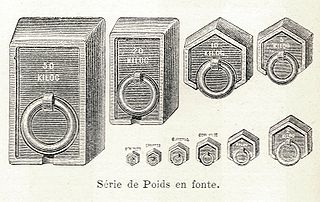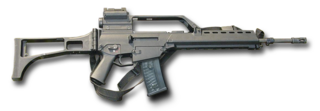| Country | Automobile Name | Manufacturer | Engine Make/Capacity | Seats | Year | Other information |
|---|---|---|---|---|---|---|
| Argentina | De Carlo 200 'Minicar' | Metalmecánica S.A.C José C. Paz, Buenos Aires | 200 cc | 2 | 1959 [1] | [2] |
| Argentina | Dinarg D-200 | Dinámica Industrial Argentina S.A., Córdoba | 191 cc | 2+2 | 1959–1969 | [3] [4] |
| Argentina | Fiat 600 | Fiat Concord S.A.C.I., Buenos Aires | Fiat 633 cc | 4 | 1960–1962 | [3] [5] |
| Australia | Edith | Gray & Harper Pty, Melbourne | Villiers 197 cc | 2 | 1953–1957 | Using a 197cc rear mounted Villiers engine, a 4-speed gearbox and independent suspensionon all wheels, the Edith was produces in small numbers with about twelve 3-wheelers and four 4-wheelers were made. The low-slung aluminum 2-seater had a claimed top speed of 58 mph and a claimed economy of 95mpg. [3] |
| Australia | Goggomobil Dart | Buckle Motors Pty Ltd, Sydney | 300 cc or 400 cc | 2 | 1959–1962 | Fibreglass body with imported Goggomobil components from Glas in Dingolfing, Germany [6] |
| Australia | Zeta | Lightburn, Adelaide | Villiers 324 cc or Sachs 493 cc (roadster model only) | 2 | 1964–1965 | Sedan, Roadster and Utility models made. |
| Austria | Felber Autoroller | A. Felber & Co, Vienna | Rotax 398 cc | 2 | 1952–1953 | [3] [7] |
| Austria | Haflinger | Steyr-Daimler-Puch Spezialfahrzeug GmbH, Steyr | 646 cc | 2 | 1959-1974 | Light weight Four-wheel drive vehicle |
| Austria | Libelle | Innsbruck | 2 | 1954 | ||
| Austria | Möve 101 | Vienna | 1953 | Based on Felber Autoroller rolling chassis | ||
Carbon-14 (14C), or radiocarbon, is a radioactive isotope of carbon with an atomic nucleus containing 6 protons and 8 neutrons. Its presence in organic materials is the basis of the radiocarbon dating method pioneered by Willard Libby and colleagues (1949) to date archaeological, geological and hydrogeological samples. Carbon-14 was discovered on February 27, 1940, by Martin Kamen and Sam Ruben at the University of California Radiation Laboratory in Berkeley, California. Its existence had been suggested by Franz Kurie in 1934.

To help compare different orders of magnitude, the following lists describe various mass levels between 10−59 kg and 1052 kg.

The Heckler & KochG36(Gewehr 36) is a 5.56×45mm assault rifle designed in the early 1990s by German company Heckler & Koch as a replacement for the heavier 7.62×51mm G3 battle rifle. It was accepted into service with the Bundeswehr in 1997, replacing the G3. Since then, it has also been a popular export, and the G36 has seen active service in military and police units in several countries, including Germany, Spain, and the United Kingdom. The G36 is gas-operated and feeds from a 30-round detachable box magazine or 100-round C-Mag drum magazine.

The SR-25 is a designated marksman rifle and semi automatic sniper rifle designed by Eugene Stoner and manufactured by Knight's Armament Company.

INVAP S.E. is an Argentine company that provides design, integration, construction and delivery of equipment, plants and devices. The company operates in North America, Europe, Asia Pacific, Latin America, the Middle East and Africa, and delivers projects for nuclear, aerospace, chemical, medical, petroleum and governmental sectors.

An assault rifle is a selective fire rifle that uses an intermediate cartridge and a detachable magazine. Assault rifles were first put into mass production and accepted into widespread service during World War II. The first assault rifle to see major usage was the German StG 44, a development of the earlier Mkb 42. While immediately after World War II, NATO countries were equipped with battle rifles, the development of the M16 rifle during the Vietnam War prompted the adoption of assault rifles by the rest of NATO. By the end of the 20th century, assault rifles had become the standard weapon in most of the world's armies, replacing full-powered rifles and sub-machine guns in most roles. Some of the most successful assault rifles include the AK-47, M16, IMI Galil and Heckler & Koch G36.

A meteor air burst is an air burst resulting from a meteor exploding mid-flight as it encounters the thicker part of the atmosphere. These types of meteors are also known as fireballs or bolides, with the brightest known as superbolides. Before entering Earth's atmosphere, these larger meteors were originally asteroids and comets of a few to several tens of metres in diameter, contrasting with the much smaller and much more common "shooting stars" that tend to burn up quickly upon atmospheric entry.

The 7.62×39mm round is a rimless bottlenecked intermediate cartridge of Soviet origin. The cartridge is widely used due to the worldwide proliferation of Russian SKS and AK-47 pattern rifles, as well as RPD and RPK light machine guns.
{{cite book}}: |first= has generic name (help)